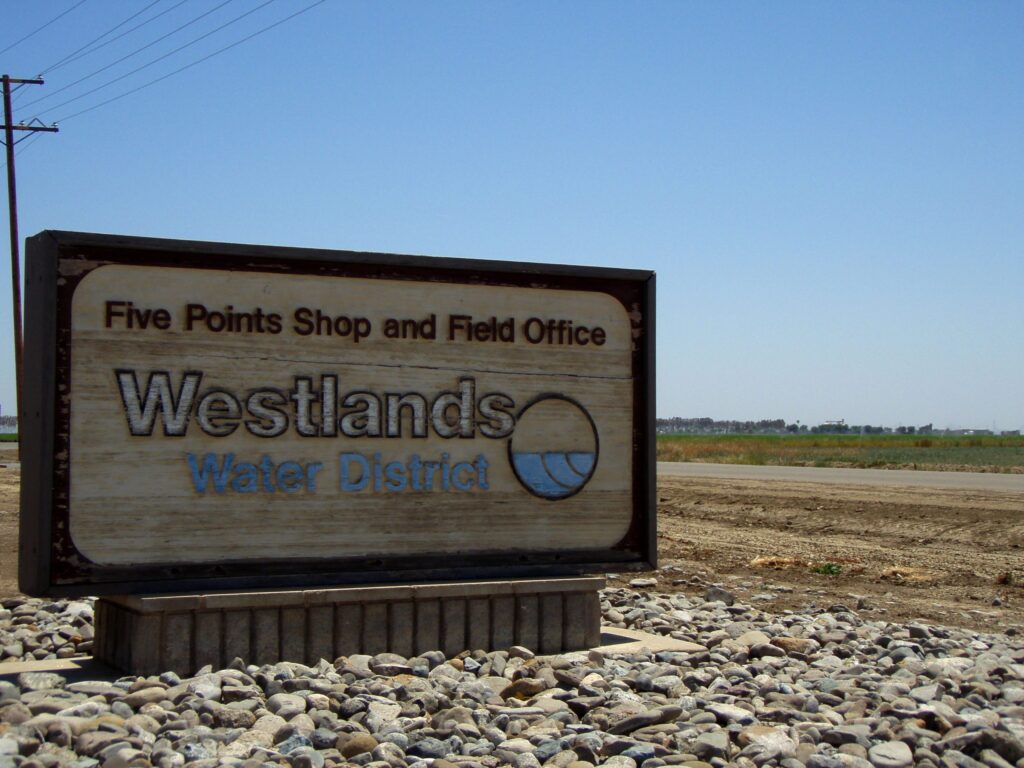Westlands Water District, the biggest agricultural water district in the state, could lose 200,000 acre feet of water – or more – for lack of demand, according to an update at its June board meeting.
The revelation was made during a briefing by Chief Operating Officer Jose Guiterrez who acknowledged Westlands could have more than 320,000 acre feet of water left over when its contract year is up next Feb. 28.
The district is allowed by the Bureau of Reclamation to hold on to, or carry over, 120,000 acre feet in the federal portion of San Luis Reservoir from one year to the next.
But the rest, 202,000 acre feet, will likely be lost – what’s commonly referred to as a “spill.”
Though Guiterrez initially told the board there would only be 120,000 acre feet of carry over water, Board Member Justin Diener questioned Guitierrez’ numbers, pointing to a memo in the board packet noting the potential loss of 202,000 acre feet.
“Is that 200,000 acre feet beyond the 120,000 acre feet of carry over?” Diener asked during the June 20 meeting.
“Yes,” Guiterrez answered.
He said if the district’s forecasts for in-district demand, including greater recharge, are accurate, that water shouldn’t be lost. However, he acknowledged that current demand is matching that of 2017, another big water year, when Westlands lost water for lack of demand.
“We didn’t have any recharge in 2017,” Guiterrez said. “We’ve been pushing hard on that this year so I think we will deliver more this year than 2017. I’m not sure how much more.”
Diener wasn’t convinced, noting that with almond prices tanking and farmers taking out orchards, demand was lower than forecast.
“We’ve been under-performing on demand – meaningfully,” he said. “I’m concerned about the accuracy of these numbers. I think our overage may be more than (200,000 acre feet).”
Though Guiterrez said he was considering putting a “pause” on recharge programs because evaporation during the hot dry summer months would reduce how much water makes it into the aquifer, Diener and the rest of the board said no way.
“We need to put the pedal to the metal,” on recharge, Diener said.
Board President Jeff Fortune agreed and said he expected recharge to pick up in the fall once growers are done with their harvests and can flood fallow fields and permanent crops.
So far, the district has only recharged 48,000 acre feet up to May 31 and a total of 60,000 acre feet by June 20, according to a presentation at the board meeting by Kitty Campbell, director of Westlands’ Groundwater Sustainability Agency. That compares with more than 150,000 acre feet recharged by other, much smaller agricultural districts elsewhere in the San Joaquin Valley.
Westlands had built a network of 30,000 acres of grower-owned recharge ponds capable of recharging 3,300 acre feet per day, according to previous reports by Campbell.
But only a fraction of those ponds were in use.
Westlands’ Deputy General Manager Russ Ferguson told SJV Water in an interview last month that could be because farmers had opted to farm those basins.
Or it could be thanks to an array of confusing and sometimes conflicting policies governing recharge that were issued by the board at the start of this year. Five different recharge notices were issued between January and April. Consequently, only a handful of growers had signed up for the programs.
In fact, of the $22 million the board had allocated to pay growers $100-per-acre-foot they recharged, only about $4 million had been spent, according to Campbell’s June 20 presentation.
Despite the stutter steps, Fortune said he was proud of the work Westlands staff had done from the start of the year through now to move different categories of water (flood, carry over, etc.) to make it less expensive for growers and get more water into the district.
“There’s a whole gamut of things staff has done that the public doesn’t get to see when we get a Lois Henry article out,” Fortune said during the June 20 meeting in reference to SJV Water’s previous article. “I want to congratulate them for their hard work.”
Share this:
- Click to share on Facebook (Opens in new window)
- Click to share on Twitter (Opens in new window)
- Click to share on LinkedIn (Opens in new window)
- Click to share on Reddit (Opens in new window)
- Click to share on Tumblr (Opens in new window)
- Click to share on Pinterest (Opens in new window)
- Click to share on Pocket (Opens in new window)
- Click to share on Telegram (Opens in new window)
- Click to share on WhatsApp (Opens in new window)
- Click to print (Opens in new window)







